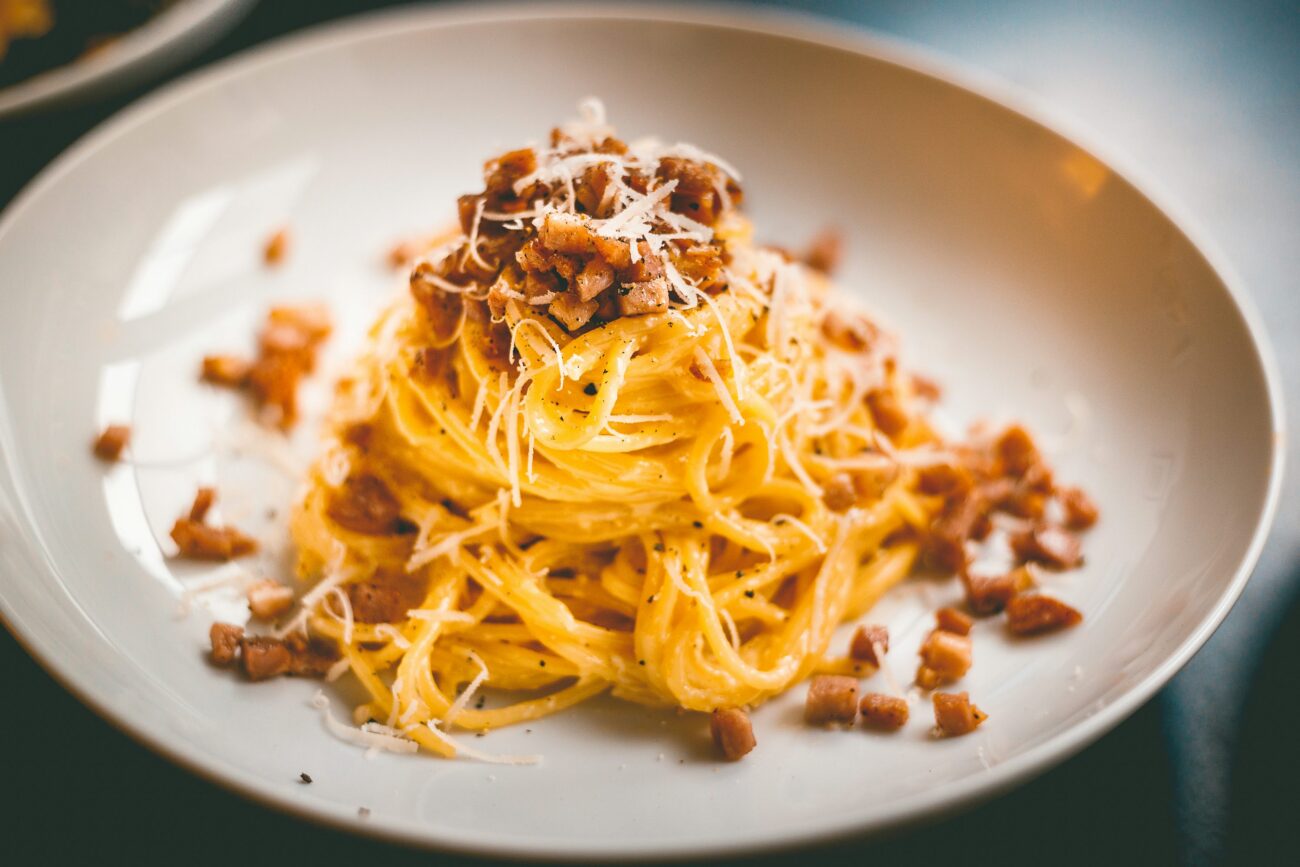Imagine twirling a fork through silky strands of spaghetti, each bite exploding with the rich, savory flavors of crispy guanciale, sharp Pecorino Romano, and a creamy egg sauce that’s pure magic. That’s the allure of spaghetti carbonara – a dish that’s deceptively simple yet profoundly satisfying. If you’re searching for the perfect spaghetti carbonara recipe that captures the essence of Roman cuisine without any fuss, you’ve landed in the right place. This comprehensive guide will walk you through everything from its intriguing origins to step-by-step instructions, pro tips, and even mouthwatering variations. Whether you’re a novice cook or a seasoned pasta enthusiast, prepare to elevate your kitchen game with this timeless Italian classic.
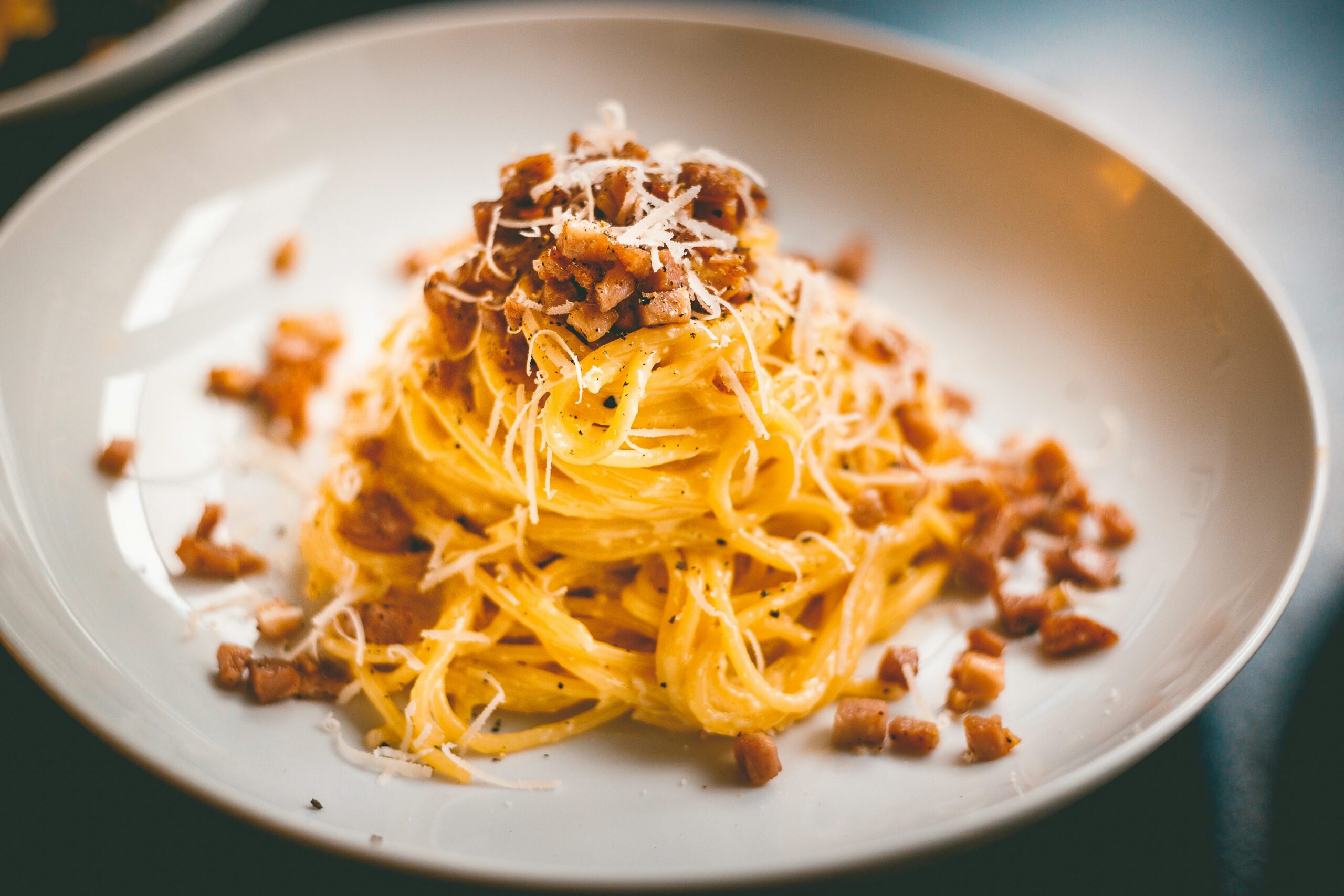
Spaghetti carbonara isn’t just a meal; it’s an experience. Originating from the heart of Italy, this recipe has captivated food lovers worldwide with its minimal ingredients and maximum flavor. In this article, we’ll dive deep into how to make authentic spaghetti carbonara at home, ensuring every forkful is creamy, peppery perfection. Plus, we’ll sprinkle in SEO-friendly insights, like why this dish ranks high in searches for “easy Italian pasta recipes” and “quick weeknight dinners.” Ready to transform your pasta nights? Let’s get started!
The Fascinating History of Spaghetti Carbonara: From Roman Roots to Global Sensation
Spaghetti carbora’s story is as rich and layered as the dish itself. While many assume it’s an ancient Roman recipe passed down through generations, the truth is more modern and intriguing. According to historical accounts, spaghetti carbonara as we know it emerged in the mid-20th century, specifically after World War II in the Lazio region of Italy, with Rome at its epicenter. The name “carbonara” derives from “carbonado,” which means charcoal worker in Italian, leading some to speculate it was a hearty meal for laborers in the Apennine Mountains. However, evidence suggests otherwise.
The dish’s origins are tied to the Allied liberation of Rome in 1944. American soldiers stationed in Italy brought rations of eggs and bacon, which local cooks ingeniously combined with available ingredients like pasta, cheese, and black pepper. One popular anecdote credits Renato Gulland, an Italian Army cook, with inventing it for a dinner honoring American troops, using powdered eggs, bacon, cream, and cheese. The first printed mention appeared in 1950 in an Italian newspaper, describing it as a sought-after dish by U.S. officers. By 1952, it surfaced in a Chicago cookbook, marking its transatlantic journey.
Debates rage over its authenticity. Some Italian scholars, like Alberto Grande, argue it’s more American than Italian, sparking national pride controversies. Yet, precursors like pasta allay Gracie (without eggs) and cacao e ova (with eggs but no meat) date back to the 19th century in Umbria and Lazio. Regional differences abound: In Rome, it’s strictly guanciale, Pecorino, eggs, and pepper – no cream or garlic for purists. Outside Italy, adaptations include cream for creaminess or bacon as a guanciale substitute.
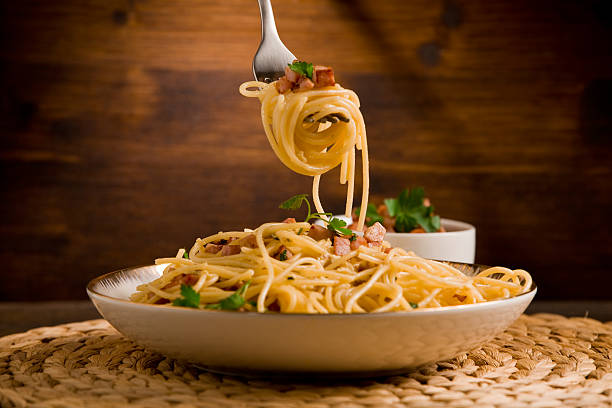
This evolution highlights carbora’s adaptability, making it a staple in Italian pasta recipes worldwide. For more on Italy’s pasta heritage, check our internal guide to Classic Italian Pasta Dishes. Externally, explore the full history on Wikipedia’s detailed page. Understanding this backstory adds depth to every bite, transforming a simple recipe into a cultural journey.
But why does this history matter for your spaghetti carbonara recipe? It underscores the importance of authenticity – sticking to traditional ingredients ensures that irresistible Roman flavor. As we move forward, let’s explore why carbonara reigns supreme as comfort food.
Why Spaghetti Carbonara is the Ultimate Comfort Food: Comforting, Quick, and Unforgettably Tasty
In a world of complicated gourmet meals, spaghetti carbonara stands out as the ultimate comfort food – warm, creamy, and ready in under 30 minutes.Spaghetti Carbonara Recipe What makes it so irresistible? It’s the perfect balance of textures and flavors: al dente pasta coated in a velvety sauce, punctuated by crispy pork bits and a peppery kick. This dish wraps you in nostalgia, evoking cozy Roman trattorias or family dinners.
From an SEO perspective, searches for “comfort food pasta recipes” spike during colder months, and carbonara tops the list for its simplicity. With just five core ingredients, it’s accessible for beginners yet sophisticated enough for dinner parties.Spaghetti Carbonara Recipe Nutritionally, it offers protein from eggs and guanciale, carbs for energy,Spaghetti Carbonara Recipe and that feel-good factor from cheese’s umami.Spaghetti Carbonara Recipe Pair it with a glass of white wine, and you’ve got an effortless meal that’s both indulgent and satisfying.
If you’re craving more comfort classics,Spaghetti Carbonara Recipe link to our Easy Weeknight Pasta Recipes.Spaghetti Carbonara Recipe Now, let’s gather the essentials for your authentic spaghetti carbonara adventure.
Essential Ingredients for Authentic Spaghetti Carbonara: Quality Over Quantity
The beauty of an authentic spaghetti carbonara recipe lies in its minimalism.Spaghetti Carbonara Recipe Forget cream-laden versions – true Roman carbonara uses just a handful of high-quality ingredients to create magic.Spaghetti Carbonara Recipe Here’s what you’ll need for 4 servings:
- Spaghetti (400g): The star of the show.Spaghetti Carbonara Recipe Opt for high-quality durum wheat pasta for that perfect al dente bite. Avoid overcooking; it should have a slight chew.
- Guanciale (150g): Cured pork jowl, essential for authenticity.Spaghetti Carbonara Recipe Its fatty richness renders into a flavorful base.Spaghetti Carbonara Recipe If unavailable, pancetta is a close substitute,Spaghetti Carbonara Recipe but avoid bacon for a smokier twist.
- Eggs (4 large, preferably room temperature): Use whole eggs or just yolks for extra creaminess.Spaghetti Carbonara Recipe They form the sauce when emulsified with pasta water – no scrambling allowed!
- Pecorino Romano Cheese (100g, freshly grated): Sharp and salty, this sheep’s milk cheese is non-negotiable. Parmesan can substitute in a pinch, but Pecorino delivers that authentic tang.
- Black Pepper (freshly ground, to taste): Generous amounts for that signature peppery heat. Toast it lightly for enhanced aroma.
- Salt (for pasta water): Just a pinch,Spaghetti Carbonara Recipe as guanciale and cheese add plenty of salinity.
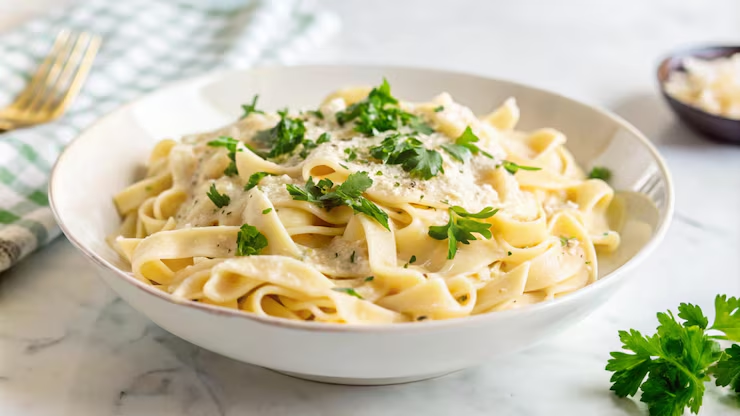
Sourcing tips: Head to Italian delis for guanciale and Pecorino. Fresh eggs from local farms elevate the dish.Spaghetti Carbonara Recipe For substitutions, see our Guanciale Alternatives Guide. These ingredients ensure your spaghetti carbonara is not just good, but extraordinarily delicious.
With your pantry stocked, it’s time to cook.Spaghetti Carbonara Recipe Follow our step-by-step guide for foolproof results.
Step-by-Step Guide to Making Perfect Spaghetti Carbonara: Simple Yet Spectacular
Crafting the perfect spaghetti carbonara recipe is an art, but with these detailed steps, you’ll nail it every time. This method serves 4 and takes about 20-30 minutes. Let’s dive in.
- Prep Your Ingredients: Cut the guanciale into small strips or cubes. Grate the Pecorino finely. Crack eggs into a bowl, whisk with most of the cheese (reserve some for garnish), and add a generous grind of black pepper. Set aside at room temperature.
- Boil the Pasta: Bring a large pot of water to a boil with a moderate amount of salt (less than usual, as the dish is salty). Add spaghetti and cook until just al dente – about 8-10 minutes. Reserve 1-2 cups of pasta water before draining; this starchy liquid is key to the sauce.
- Render the Guanciale: In a large skillet over medium heat, cook the guanciale until crispy and golden, about 5-7 minutes.Spaghetti Carbonara Recipe No oil needed – it renders its own fat. Remove from heat if it finishes before the pasta.
- Emulsify the Sauce: Add the drained pasta to the skillet with guanciale. Spaghetti Carbonara Recipe Toss to coat in the fat. Off the heat, slowly pour in the egg-cheese mixture while stirring vigorously. Add reserved pasta water gradually (start with 1/2 cup) to create a creamy sauce. The residual heat cooks the eggs gently – avoid direct heat to prevent scrambling.
- Season and Serve: Taste and adjust with more pepper or cheese. Serve immediately in warmed bowls, topped with reserved Pecorino and extra pepper.
This technique guarantees a silky, not clumpy, sauce. For visual learners, reference external tutorials like Antonio Carlucci’s classic video. If you’re new to pasta, link to our Beginner Pasta Cooking Tips.
Pro Tips for Mastering Spaghetti Carbonara: Elevate Your Game to Restaurant Quality
Achieving that restaurant-worthy spaghetti carbonara requires a few insider secrets. Here are expert tips to make yours unbeatable:https://www.bbcgoodfood.com/
- Use Room-Temperature Eggs: Cold eggs can seize up; let them warm for smoother emulsification.
- Whisk Vigorously: Beat the egg-cheese mix until frothy for ultimate creaminess.
- Off-Heat Mixing: Always remove from heat before adding eggs to avoid scrambled eggs.
- Toast the Pepper: Lightly toast black pepper in the guanciale fat for deeper flavor.
- Pasta Water Magic: Add it sparingly to adjust consistency – it’s the secret to glossy sauce.
- Quality Matters: Freshly grate cheese; pre-grated lacks flavor.
- Serve Immediately: Carbonara doesn’t reheat well; eat hot for best texture.
These tips, drawn from culinary pros, will transform your dish. For more advanced techniques, explore our Italian Cooking Masterclass.
Common Mistakes to Avoid When Making Carbonara: Don’t Sabotage Your Sauce
Even seasoned cooks falter with spaghetti carbonara. Here are pitfalls to dodge for flawless results:
- Adding Cream: Purists cringe – it dilutes authenticity. Stick to eggs for natural creaminess.
- Overheating the Eggs: Direct heat scrambles them; always mix off-stove.
- Rinsing Pasta: This washes away starch needed for sauce adhesion.
- Using the Wrong Cheese or Meat: Skip Parmesan if possible; bacon adds unwanted smoke.
- Not Enough Pepper: It’s called carbonara for a reason – be generous!
- Overcooking Pasta: Al dente is crucial; mushy noodles ruin texture.
- Ignoring Pasta Water: Without it, the sauce turns clumpy.
Avoid these, and your carbonara will shine. For troubleshooting, check external resources like Bon Appetit’s guide.
Delicious Variations on Traditional Carbonara: Twist the Classic for Exciting Flavors
While purists stick to tradition, variations keep spaghetti carbonara exciting. Here are innovative twists:
- Vegetarian Carbonara: Swap guanciale for mushrooms or zucchini for a meat-free delight.
- Seafood Carbonara: Add shrimp or clams for a coastal vibe, popular in coastal Italy.
- Creamy American-Style: Incorporate a splash of cream for extra richness, as in early recipes.
- Spicy Carbonara: Infuse with chili flakes for heat.
- Green Carbonara: Mix in peas or broccoli for color and nutrition.
- Alternative Pastas: Use rigatoni or bucatini for better sauce cling.
These adaptations maintain the essence while suiting tastes. For more ideas, link to Pasta Variations Recipes.
Nutritional Information and Health Benefits: Indulge Wisely
A typical serving (about 3 cups) of spaghetti carbonara packs around 650-900 calories, with 30-40g protein, 70-80g carbs, and 30-40g fat. It’s rich in B vitamins from eggs, calcium from cheese, and energy from pasta. However, it’s high in sodium and saturated fats, so enjoy in moderation.
For lighter versions, use egg whites or turkey bacon. Balance with salads for a healthier meal. Curious about pasta nutrition? Visit our Pasta Health Guide.
Pairing Suggestions: What to Serve with Spaghetti Carbonara for a Complete Meal
Elevate your spaghetti carbonara with these pairings:
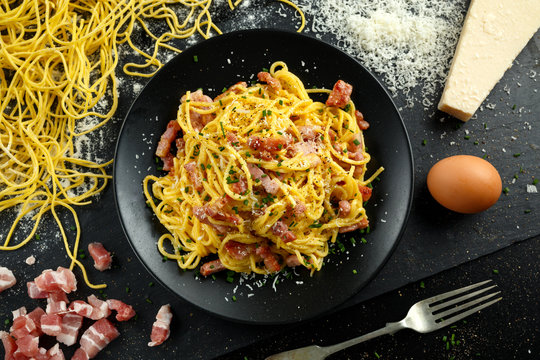
- Wines: Crisp whites like Frascati or Pinot Giglio cut through richness.
- Sides: Simple green salad with vinaigrette or garlic bread.
- Desserts: Tiramisu or gelato for an Italian finale.
These complements create a balanced feast. For wine tips, check Italian Wine Pairings.
Frequently Asked Questions About Spaghetti Carbonara: Your Queries Answered
Is cream used in authentic carbonara?
No, traditional recipes rely on eggs for creaminess.
Can I use bacon instead of guanciale?
Yes, but it adds smoke; pancetta is closer.
How do I prevent scrambled eggs?
Mix off heat with pasta water.
Is carbonara gluten-free?
Use gluten-free pasta for adaptations.
What’s the best cheese for carbonara?
Pecorino Romano for authenticity.
For more FAQs, explore external sites like BBC Good Food.
